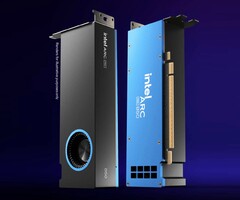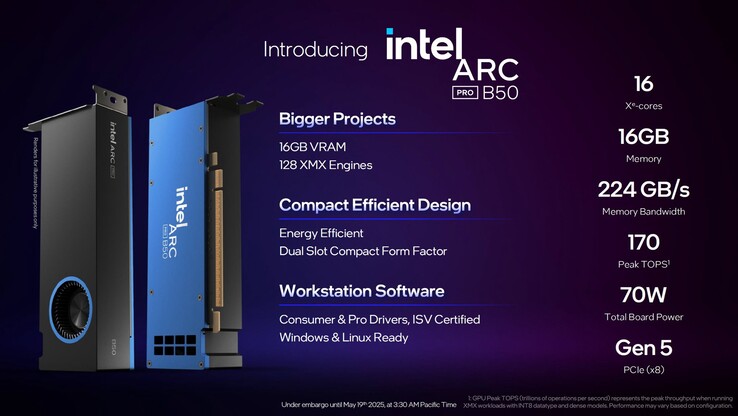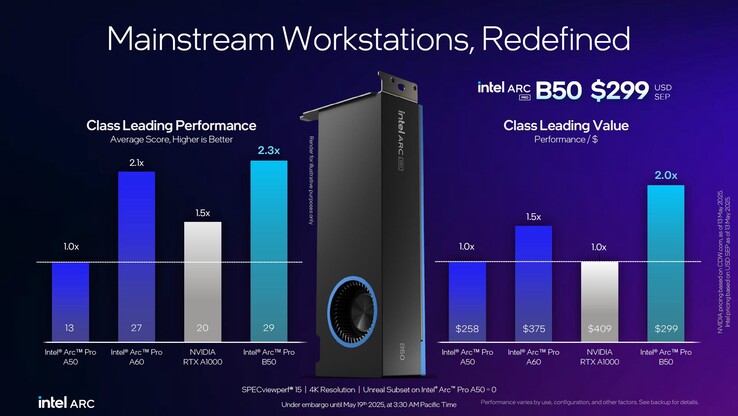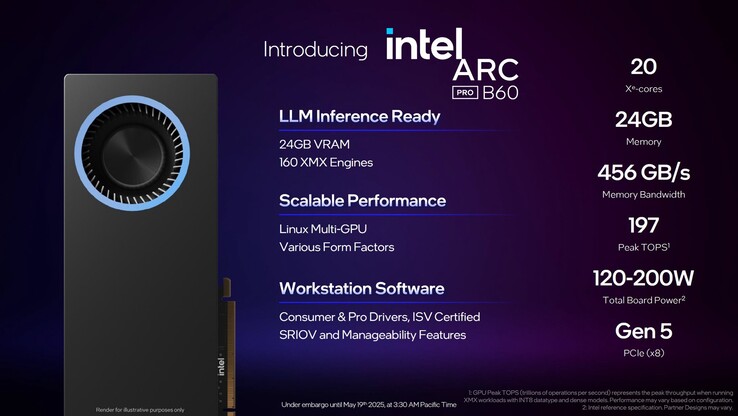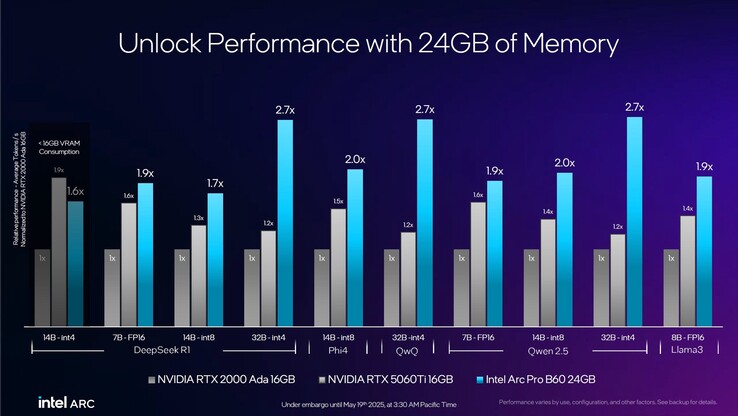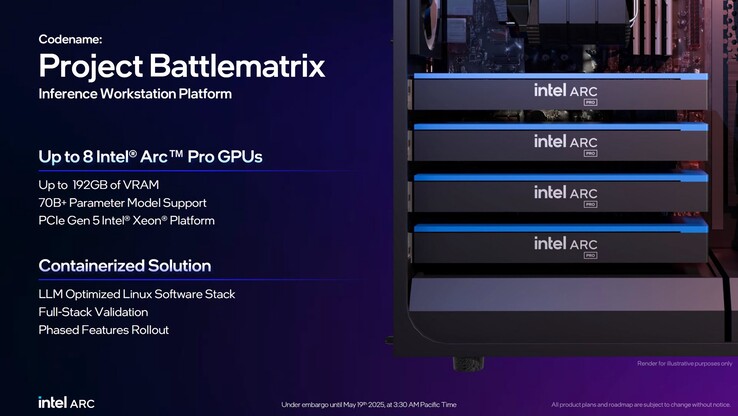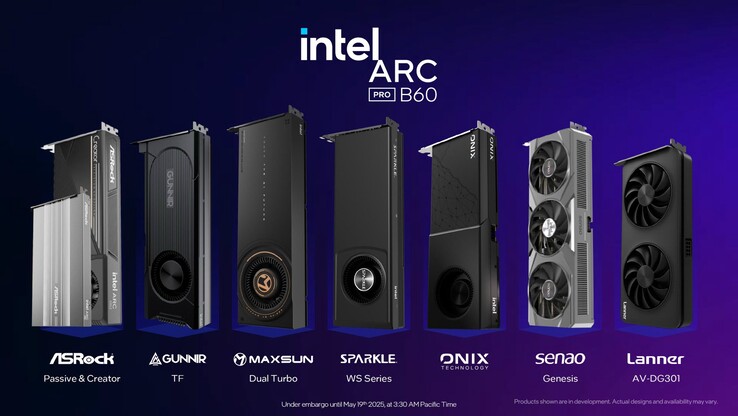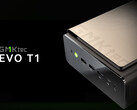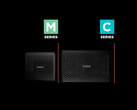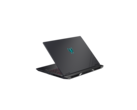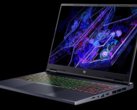Following the relatively successful launch of the Intel Arc B580, Intel is presenting two professional GPUs based on the same Battlemage architecture at Computex 2025. The first is the Intel Arc Pro B50, which, at a price of $299, is similarly priced to the Arc B580, but features 16 instead of 20 Xe2 cores and a power consumption of 70 watts.
Intel is expanding the graphics memory to 16 GB while simultaneously reducing memory bandwidth to just 224 GB/s. The focus of the Arc Pro B50 is therefore on efficiency and price-performance, as combining multiple Arc Pro B50s should enable AI workstations with massive amounts of graphics memory at a fraction of the price of a GeForce RTX 5090. According to Intel's benchmarks, the Arc Pro B50 is more than twice as fast as the Arc Pro A50 while claiming to deliver twice the performance per dollar compared to the Nvidia GeForce RTX A1000.
The Arc Pro B60, like the Arc B580, utilizes the full 20 Xe2 cores of the GPU, and the power dissipation can be adjusted from 120 watts to 200 watts. Intel installs 24 GB of VRAM with a bandwidth of 456 GB/s in this model. Thanks in part to the expanded VRAM, the Arc Pro B60 is said to be significantly faster than the Nvidia RTX 2000 Ada or even the GeForce RTX 5060 Ti 16 GB in AI workloads such as DeepSeek R1 or Llama3, as the benchmark results embedded below demonstrate.
Intel Project Battlematrix is designed to enable the combination of up to eight Arc Pro B60 graphics cards to create a system with 192 GB of VRAM, allowing it to process larger AI models than, for example, AMD Ryzen Strix Halo or the Apple M4 Max. Project Battlematrix uses a system based on an Intel Xeon processor with PCIe 5 support, and Intel offers Linux-based software to manage the system.
Price and availability
The Intel Arc Pro B50 is expected to launch in the third quarter of 2025 for $299 while the Arc Pro B60 will launch at the same time for around $500. Both models will initially be sold as part of complete workstations, so end consumers may not be able to buy the GPUs separately until the fourth quarter.




